By FELICITY DARVILLE
HE was just 14 months old when he first set foot on Bahamian soil. Walking with the pitter patter that toddlers do, Magnus Lindroth wiggled his toes in the sand and got his feet wet on what is now called Paradise Island. Here, his views of the world would be shaped as he basked in island life.
In the comfort of his mother’s arms, Magnus was oblivious to the fact that his father was busy laying the foundation for what would become the bedrock of the tourism industry in The Bahamas. But he would grow to appreciate his father’s contribution, value the country of his youth, and keep lasting connections with the friends he made here.
Magnus’ father, Arne Lindroth, worked as the right-hand man for Axel Wenner-Gren in Switzerland. He was an industrialist and one of the richest men in the world in the 1930s. Wenner-Gren amassed a fortune from his early insight that the industrial vacuum cleaner could be adapted for domestic use. Shortly after World War 1, while Wenner-Gren was working for the Swedish Lighting Company Lux, he convinced the company to buy the patent to a home vacuum cleaner. If the ‘Electrolux vacuum cleaner’ was a success, Wenner-Gren asked to be paid in company stocks rather than cash. That shrewd business move resulted in him becoming the majority owner of Electrolux. The firm was a leading brand in both vacuum cleaner and refrigerator technology.
Having secured his wealth, Wennergren had bought much of Hog Island in The Bahamas in the late 1930s as a possible retreat in case of war with Hitler.
He sent his trusted right hand Arne Lindroth to oversee the development of Hog Island. Arne left Switzerland and arrived in Nassau in 1951. A year later, his wife, Gunnel joined him, along with their three sons, Ulf, Orjan and baby Magnus.
The Lindroth family first lived in Paradise Town, as it was called then. Paradise Town consisted of just a few apartments at the entrance to the canal on Hog Island. There was no bridge linking Hog Island with New Providence at the time, and the only way across was with the so-called “bum-boats”.
In the 1940s, Wenner-Gren commissioned a canal to be dug on Hog Island in preparation for the further development of the island. Once the canal was dug out and opened to the water on both sides, a café/restaurant was built in the canal. It was called Café Martinique, situated in the large open area in the middle of the canal (now called Paradise Lake), just on the south side of what is now the Atlantis Resort.
After the establishment of Cafe Martinique, the Lindroth family moved from Paradise Town to live in the Old Manse, which is located just above St Andrew’s Presbyterian Kirk, near Government House. In the 1800s, this house was the residence of the pastor of St Andrew’s Church, built on the south side of the church on the hill.
After living in that residence for over a year, the Lindroth family moved to Charlotte Court, a house on the north-east corner of Charlotte and Shirley Streets. Arne Lindroth then purchased the house ‘Sunningridge’ on West Hill St and Queen St. While it was being renovated, the Lindroths moved to live in the house called ‘Villa Rose’ on West Bay St, the last house before Brown’s Point.
All while his family was settling into their lives in The Bahamas, Arne was busy creating Paradise Beach. He was also planning the creation of the hotel ‘The 52-Room Inn’ on the eastern end of Hog Island, by the golf course.
Arne Lindroth was also the director of a new investment bank, Bank of Bahamas, set up by Axel Wenner-Gren. There is no known relation to the existing Bank of The Bahamas. The Lindroth family finally moved into their renovated Sunningridge home in November, 1957. That year, their fourth child and only daughter, Elizabeth, was born. The Lindroth family lived at Sunningridge until April 1969. Mangum was a young man by the time his family left The Bahamas.
In addition to Paradise Beach and Bank of Bahamas, Arne Lindroth also made a significant impact on the island of Andros. Wenner-Gren had bought property at the entrance to Fresh Creek in Andros. There, he built a small marina and hotel called the Lighthouse Club. Arne successfully managed it. In 2021, a Bahamian-owned private consortium of hotel and marina developers and investors purchased the historic Lighthouse Yacht Club and Marina Ltd. Owned by the Hotel Corporation, the Lighthouse Yacht Club and Marina was the last remaining property in the government’s hotel portfolio.
In 1959, the Hog Island estate was sold to A&P Supermarket heir, Huntington Hartford, who renamed it Paradise Island. Two years later, Axel Wenner-Gren died.
Hartford developed Hog Island over the next three years after its purchase, hoping to turn it into another Monte Carlo. He developed the Ocean Club. One feature of his Ocean Club, formerly The 52-Room Inn, was a cloister built from the disassembled stones of a monastery that William Randolph Hearst had stored in a Florida warehouse.
Hartford’s Ocean Club was featured in two James Bond films: Thunderball in 1965 (with Sean Connery) and Casino Royale in 2006 (with Daniel Craig).
Hartford was responsible for getting the gambling license for Paradise Island by hiring Sir Stafford Sands, a Bahamian lawyer. Sir Stafford was a close family friend of the Lindroths.
Growing up in The Bahamas, Magnus had a rich social experience. His family knew many of the movers and shakers of the day, such as Sir Stafford, but they also had relationships with Bahamians of every social strata.
Magnus said that in his household, he spoke Swedish, at his school, St Andrew’s, he spoke English, and on the street, he spoke Bahamian. He cherished his relationship with friends such as Ephraim Jones, whom he grew up with ‘like a brother’. Jones’ mother, Acklins native Alice Jones, was the family cook. Mangus describes Alice as a “real Bahamian Bahama mama” and “the best cook in the world”. One of his best friends to this day is Robert Sands, whom he met in kindergarten. The Sands family owned a haberdashery next to the British Colonial Hilton Hotel in Downtown, Nassau for many years.
Magnus learned to swim on Paradise Island Beach. He enjoyed watching the big wigs get together at his parents’ cocktail parties. But he also enjoyed playing on the street with his neighbourhood friends, such as the five children of the Ryan family.
“I had a wonderful childhood,” Magnus told me.
“I used to swim at Nassau Harbour on both sides. Back in the day, you could do it... not today. Those were good times... no badness. There was a bit of (racial) separation in the country. There were economic disparities, but not as much socially.”
By the mid-1960s, the company Mary Carter Paint was going into the casino business. It bought 3,000-plus acres on Paradise Island from Huntington Hartford.
The construction of the first Paradise Island bridge commenced in 1966 and opened to traffic in April 1967. Arne Lindroth had hoped that rather than a bridge to link Paradise Island and Nassau, a tunnel would be built to preserve the visual beauty of the island. However, that possibility was not adopted for engineering reasons.
In 1967, the Mary Carter Paint company opened the Paradise Island Casino. By 1968, the company not only dropped its paint business, but also its name. With the casino being such a financial success, the company was renamed Resorts International and officially relocated to The Bahamas. Paradise Island then became the focal point for American investment and financial influence.
In February 2004, Huntington Hartford moved to Lyford Cay, where he passed away in his home in 2008 at the age of 97.
After the Mary Carter/Resorts International take-over of Paradise Island, Arne Lindroth had no position in the casino financial world, and he and his family left in 1969.
Magnus left with a book full of memories and a few friends that have lasted a lifetime. His mother, Gunnel would return to The Bahamas in 2006, taking residence at Cable Beach Manor, where she resided until she passed away in 2014 at the age of 92.
A ‘lovely Bahamian woman’ named Lillis took care of her until her death, and the Lindroth family cared for and respected her.
Magnus eventually became a good mathematician, and he was involved in the computer industry back in its early days. He called that time ‘ground zero’, when the computer system was nothing like it is today. But pioneers like him helped to shift the world into what is now the digital age. He currently lives in Sweden and is enjoying retirement at the age of 72.
“It was beautiful,” he said of his time in The Bahamas - the place where he evolved from a baby to a man.
“I have no regrets. I am still at heart a true Bahamian... maybe not legally, but always in my heart.”
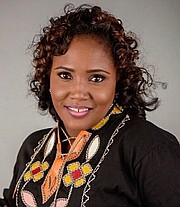
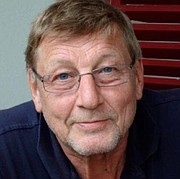
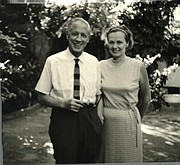
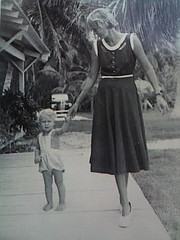
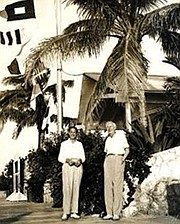
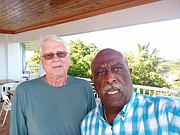
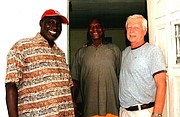
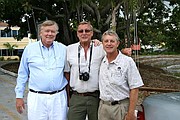




Comments
Use the comment form below to begin a discussion about this content.
Sign in to comment
Or login with:
OpenID